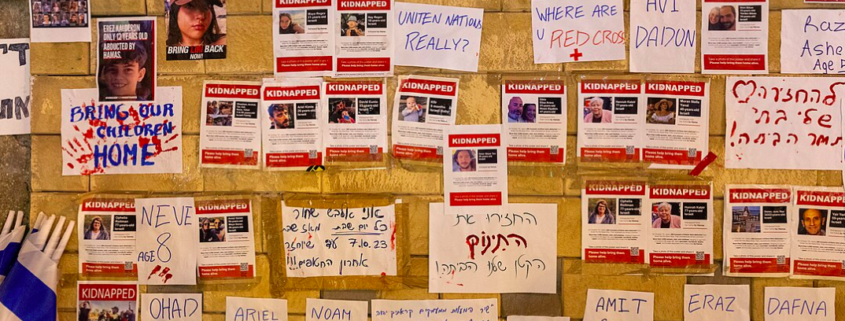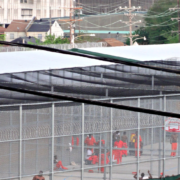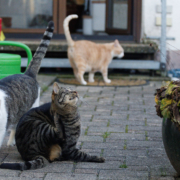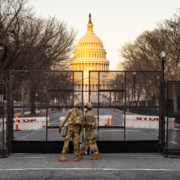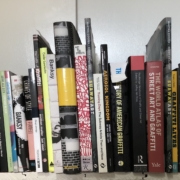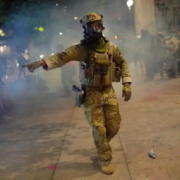When street art provokes moral outrage?
Graffiti and street art have been a constant presence in the long-standing conflict between Israel and the Palestinian people, both inside Israel and the Occupied Territories (i.e., West Bank, East Jerusalem, and Golan Heights) and Gaza.
Not only have Israelis and Palestinians living in the Occupied Territories and Gaza engaged graffiti and street art (e.g., Know Hope, El Mac and Retna), but well-known outsiders like Banksy, Blue and Swoon have produced iconic and powerful images and messages on various surfaces, including border walls that separate Israel from the West Bank and elsewhere.
That being said, graffiti and street art connected to the conflict has never been confined to the war zone. We have seen all manner of this form of political communication in urban public spaces in major cities worldwide.
This brings us to the current conflict. On Sunday October 7, 2023 Hamas forces kidnapped almost 200 people (mostly Israelis) and killed another 1,400.
Almost immediately, Nitzan Mintz, (a visual poet) and Dede Bandaid (a visual artist), Israelis temporarily living in the United States (with the assistance of graphic designers Tal Huber and Shira Gershoni), quickly created posters/flyers featuring the images of the kidnapped individuals. These were rapidly disseminated worldwide. A veritable army of sympathizers downloaded this content from the web and started affixing these posters in public places in large cities. In many ways, these posters of the kidnapped Israelis, served as a compelling form of agitprop, likely to evoke strong reactions from a wider audience.
In many respects, this activity has historical precedents. For example, starting in the 1980s, American street artist Robbie Conal, regularly produced posters with unflattering hand drawn images resembling caricatures of dictators, corrupt politicians, and tyrants, accompanied by disparaging text. Numerous volunteers quickly affixed these posters to utility poles, building walls, street signs, etc. throughout the United States and around the world.
But the postering of kidnapped Israeli citizens took an immediate turn when Israeli Defense Forces started bombing of Gaza, leading to significant property destruction, injuries, and civilian casualties. While the painting of swastikas on lots of surfaces, including Jewish cemetery tombstones and properties owned by Jewish individuals have been marked with Stars of David appeared to increase, the posters depicting the kidnapped Israelis were no longer tolerated.
Despite the fact that most street art is low-level vandalism and an act of property crime, we are now seeing the posters of the kidnapped Israelis torn down not by public works departments, or ghost buffers, but by individuals who are unhappy with the Israeli response to Hamas.
What lessons can be learned from this case study? In short, it highlights the potential risks and complexities associated with street art as a form of activism. It also underscores the idea that even when street artists have good intentions and aim to raise awareness and provoke moral outrage through their work, there is no guarantee that the public’s reactions will align with their objectives. Ultimately there is an inherent unpredictability of public perception and the limitations of an artist’s control over their message. While graffiti and street art can be a powerful medium for social commentary, it comes with inherent uncertainties and challenges.
In sum, even a well-orchestrated effort to create and disseminate street art designed to raise awareness, garner sympathy, and moral outrage can backfire. Experienced graffiti writers and street artists know too well that once they have completed their work, reactions to it are beyond their control.
Photo Credit
Photographer: Oren Rozen
Title: Posters in front of the Kirya, calling for the return of Israeli hostages taken to Gaza

